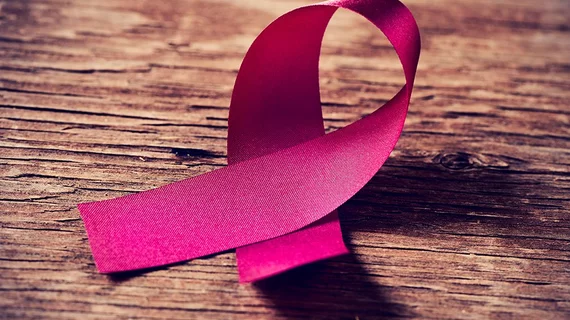Insurance status a key clue in closing racial, economic breast cancer treatment gaps
Whether a woman is uninsured or covered by Medicaid could be a key clue in helping to improve breast cancer outcomes for racial and economic minorities.
Researchers from several institutions recently reached that conclusion after pouring over data from more than 177,000 cancer patients. They found that a higher proportion of women on Medicaid or without insurance received a diagnosis of stage 3 breast cancer when compared to their counterparts. Black, American Indian and Hispanic individuals also had higher odds of being diagnosed with advanced stages of the disease, according to the study, published Jan. 9 in JAMA Oncology.
Lead author Naomi Ko, MD, and colleagues acknowledged that this finding alone will not move the treatment needle for minority breast cancer patients. But it’s an important clue for radiologists and other clinicians on the care team.
“Adequate insurance coverage for all patients with cancer is an important consideration and one major systemic change that can be pursued to ameliorate consistent disparities,” wrote Ko, with the Boston University School of Medicine, and colleagues.
The team targeted this minority population, they wrote, due to ongoing disparities in non-white women, who often receive a cancer diagnosis at a much more advanced stage, with a higher risk of death, too. Oftentimes, lack of coverage and access to nearby care can exacerbate these problems, they noted.
To explore the issue further, Ko et al. conducted a retrospective analysis of data from the Surveillance, Epidemiology, and End Results Program. They pinpointed women age 40 to 64 who received a stage 1 or 3 breast cancer diagnosis between 2010 and 2016. All told, the insured population logged an 11% rate of being diagnosed with late-stage cancer, compared to 20% in the Medicaid/uninsured group.
Other more complex factors influence this treatment gap, both biological and social, necessitating complex resolutions that will require input from multiple stakeholders.
“The scope of this problem is large, with many necessary but insufficient solutions,” Ko and colleagues concluded. “As such, we recommend a comprehensive, multifaceted approach to solve breast cancer disparities. Future studies should continue to examine the direct and indirect costs of inadequate health insurance to patients of all racial/ethnic backgrounds, their families and society as a whole.”

